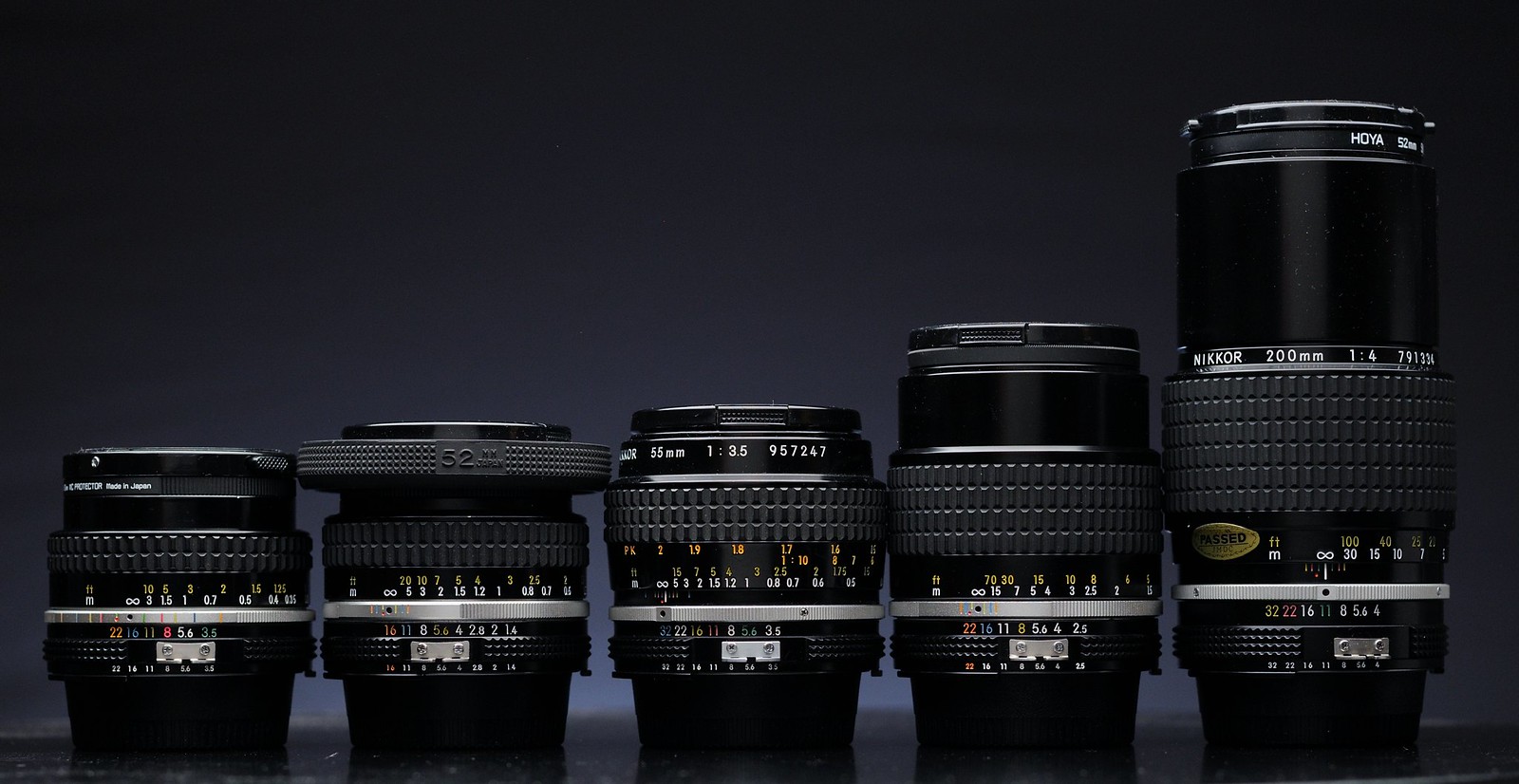With the release of the AI-S lenses however, there were some subtle changes external to the lens: the primary reason for AI-S was to use enable cameras to use program or shutter priority modes - this was important for the upcoming release of cameras with this function at the time and the AI-S lenses were designed to facilitate this. With this said, the lenses that had a AI and then an AI-S counterpart were typically optically identical.

But why does this matter to be able to distinguish between an AI vs AI-S lens, if the optical formulas were the same?
During the cutover to AI-S changes typically included, but not limited to:
- linear aperture to support accurate stop down
- shorter focus throws
- lighter construction
making informed decisions when buying a Nikkor AI/AI-S lens online
Note the emphasis in the leading text when we mentioned the optical formulas between the AI and AI-S lenses. For some lenses, such as the Nikkor 28mm f/2.8 AI vs AI-S, the optical formula changed when the AI-S version was released and it was reported that the AI-S was optically superior. Even when the optical formula remained identical, other changes may also influence optical output such as the changes to AI lens with curved aperture blades vs straight blades of the AI-S models such as in the case of the well regarded Nikkor 105mm f/2.5 AI-S.
To determine such differences you can consult the 3 significant online resources for information regarding the legacy Nikkors:
- Roland Vink's Nikkor lens database is an outstanding resource for obtaining specifications and also tying them back to serial number ranges which is useful for tracking significant changes within a lens production run of the same name.
- The Photography in Malaysia Nikon lens resources are also a great catalogue of Nikkor specifications.
- Bjørn Rørslett's legendary Nikkor lens reviews and the complimenting online community
As noted above, it can be important to distinguish between an AI and an equivalent AI-S lens: so how do we do this?
There are a number of visible signs, and assuming that the lenses have not been Frankenstien'd, the sure fire way is to look at the mount - the AI-S lenses will have a scoop (or lens type signaling pin notch as per Nikon) cut into the mount and a second set of f/numbers on the aperture ring towards the lens mount which are in smaller font: these markings are known as the aperture display readout / ADR and AI-S lenses will have the minimum aperture being colour coded in orange on the ADR markings; on AI lenses, all the f-stops are in white and non-AI/pre-AI do not have the ADR at all.

see the notch cut into the chrome mount, at 7 o'clock/bottom left
One other possible visible difference can be seen in compact AI Nikkors: their depth of field markings on the lens barrels whereas the AI-S lenses would have these markings on the chrome grab ring - but this is not always the Nikkor 20mm f/3.5 AI demonstrates (see below).

Notice the 20mm AI on the left has its DoF markings on the chrome ring whereas the 55mm AI in the center has them on the barrel. The 105mm AI-S on the right is the only one with an orange aperture number on the ADR
Verification of AI vs AI-S can be cross referenced at Vink's Nikkor lens database.
With the ability to distinguish between AI and AI-S lenses, along with the references from the 3 links mentioned within, buying decisions can be significantly more informed especially when coming up against sellers who are ignorant or deliberately vague and misleading with their pictures and information.
No comments:
Post a Comment